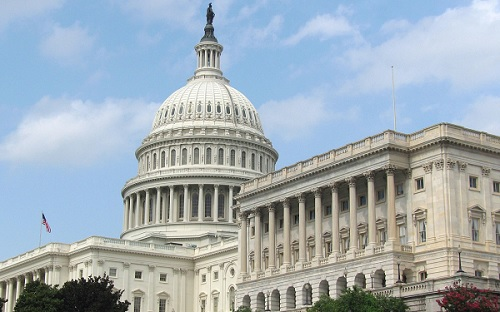Unit 3: The Federal System of American Government
Unit 3: The Federal System of American Government

Unit 3: The Federal System of American Government

Unit 3: The Federal System of American Government
A federal government is a system of government that divides the power between a larger central government, and the local and regional governments beneath it. In the United States, the federal government’s powers were established by the Constitution. Perfect examples of federal governments are those that function best in large countries with a broad diversity amongst its citizens, though where a common culture still exists, which ties everyone together. To explore this concept, consider the following federal government definition.
A federal government is a system designed to take power from the rich and give it to the poor, so to speak. Power is divided among the larger, stronger, central government of a nation, and the smaller state and regional governments within that nation. This is done by assigning certain responsibilities to each sector so that the central government has its own job to do, as do the state and local governments.
In the United States, the Constitution dictates that the federal government can maintain control over things like the creation of currency, the granting of patents, and the creation of the lower courts, to name a few. Another example of a federal government responsibility includes the power to declare war. These are known as “delegated powers,” and are specifically listed in Article 1of the U.S. Constitution.
Branches of Federal Government
Even though the Constitution splits powers between the federal government and the states, the framers of the Constitution wanted further assurances that the central government could not gain oppressive authority. To that end, three branches of federal government were created, each with its own powers and responsibilities, and each one having the authority to check up on the others. This is known as a system of checks and balances
The Legislative Branch
The legislative branch of the United States federal government is another name for Congress, and Congress is divided into two houses: the Senate, and the House of Representatives. The main function of the legislative branch is to create laws.
Individual members of the House and Senate may write draft laws, referred to as “bills,” and present them to Congress for discussion and voting. Bills that are approved by vote in both houses are then sent to the President for his signature. Should the President refuse to sign the bill, or “veto” it, the bill goes back to Congress where they may vote to override the President’s decision.
The Senate is comprised of 100 senators total, with two senators from each of the country’s 50 states. The House of Representatives consists of 435 members, and the number of members from each state varies based on the total population of the states they represent. So for example, a larger state like Texas would have more representatives in the House than the smallest state in the country, Rhode Island.
The Executive Branch
The President heads up the executive branch of the federal government, which is the branch that approves and carries out the laws that are created by the legislative branch. In addition to the President, the executive branch consists of the Vice President and members of the presidential cabinet. The cabinet helps the President make decisions on the more important issues, and consists of 15 major departments. Included in the presidential cabinet are the Secretary of State, the Secretary of Defense, and the Secretary of the Treasury, among others.
The Judicial Branch
The judicial branch presides over the country’s court system, and it uses court cases to interpret and express the meaning and importance of the Constitution and the laws of the land. The U.S. Supreme Court heads up the judicial branch, and its chief responsibility is to rule on whether or not something is permitted under the rules of the Constitution, meaning whether it is constitutional or unconstitutional.
There are nine justices (judges) on the Supreme Court: eight associate justices and one chief justice. The President selects the justices individually, and the Senate then approves the President’s picks. Unlike the lower courts, justices on the Supreme Court do not have set term limits, and can serve for as many years as they like. In fact, many of them serve the rest of their lives. The rulings made by the Supreme Court are irreversible, and they set precedent for all related cases going forward
This unit emphasizes the basic principles of political organization and learn the processes by which power is delegated within all levels of the three branches of government.
Unit Focus
- Basic principles of American government
- Powers given and denied to national and state governments
- Ways the Constitution can be amended
Vocabulary
Lesson Reading
Videos and Interactives (Click on Images to View Content)

